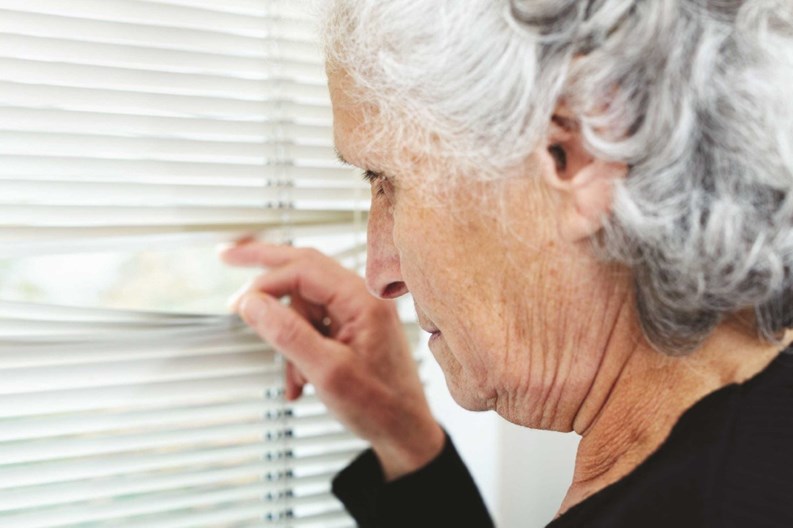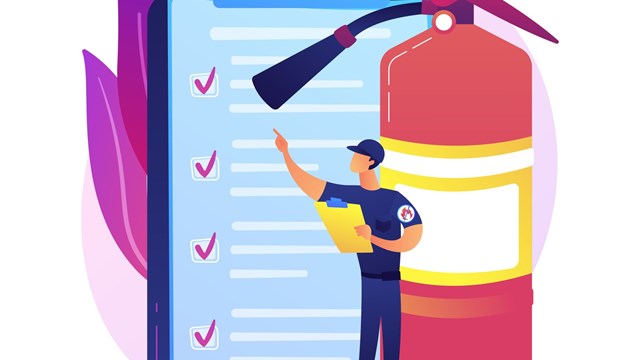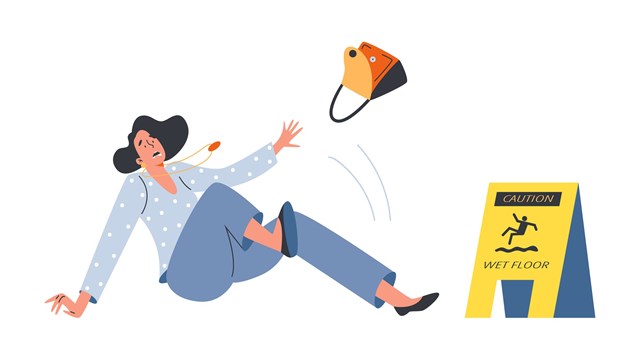Back in the 1980s, McGruff the Crime Dog taught children and parents alike to “Take a bite out of crime.” The tough but affable, anthropomorphic bloodhound was created by the Ad Council for the National Crime Prevention Council and used by police officers to build crime awareness programs among American families. McGruff’s mission is essentially the same as countless proactive home owner associations nationwide—sniffing out criminals.
“Neighborhood watches or citizen patrol groups can be effective,” says Attorney Louis Caplan of the Boca Raton-based Sachs Sax & Caplan. Caplan, chair of the law firm’s Condominium and Homeowners Association practice, adds, “The main way that they would help to prevent crimes, and have been successful, is primarily the result of having what appears to be somewhat of a police presence.”
Value in Security?
According to Neighborhoodscout.com, there is good reason for vigilance. For example, recent annual statistics found that there was 101,969 violent crimes and 669,035 property crimes in the state of Florida. With over 18 million residents, the chance of becoming a victim of a violent crime is 1 in 184 while the property crime rate is 1 in 28.
The severity of crime statistics varies by region, but crime will occur regardless of location which is why it’s surprising that more homeowner associations are not initiating a watch group. Attorney Russell Robbins of the Coral Springs-based law firm of Mirza Basulto & Robbins says that a cost-benefit analysis on establishing a neighborhood watch is scarce. “My primary concern from the association’s perspective is liability and potential discriminatory or selective enforcement in the actions of the neighborhood watch.”
For many homeowners associations, there is a false sense of security resulting from otherwise proactive, visible security measures such as expensive cameras and other technologies. “Crime occurs and will go down, it’s not realistic to think otherwise,” says Carmen Caldwell, the executive director of the Miami-Dade Citizens Crime Watch, who has 30-plus years experience helping associations build watch programs. “Those living in gated communities, with guards and high walls have a false sense of security as often crime occurs from within.”
Caldwell agrees, though, that traditional security measures are beneficial, especially when coupled with a watch group. This is an approach Caplan also supports. “We would not represent that a neighborhood watch group would better protect the community than electronic surveillance and security staff. Security staff, whether employed directly by the association or through a security company, does normally provide a higher level of security, as those people are specifically trained, and depending on the scope of the contract, may be able to provide a stronger security presence,” he adds. “That does not mean that a neighborhood watch program cannot still be a benefit. We would suggest that there be a coordinated effort, as their tasks can be very different.”
Don’t Cross the Line
While crime is always a sensitive sticking point for community members, a neighborhood watch organization has to be careful not to blur the lines of law enforcement. This scenario was perhaps best underscored recently by the highly-publicized Trayvon Martin case where George Zimmerman, a volunteer neighborhood watch member, shot and killed Martin, a teenager he suspected was a criminal.
Attorney Lisa Magill with the Fort Lauderdale law firm Becker & Poliakoff refers to a recent column she wrote on the subject. “Community associations are rightfully extremely concerned about the uproar in the Trayvon Martin case and its potential impact on their neighborhood watch or community watch programs,” she noted. “This incident should cause community leaders to examine current protocol/guidelines (or lack of specificity) and re-vamp the program in a way that can accomplish the community objectives.”
In the court of public opinion, many Americans have found Zimmerman guilty; however, the case is a matter for the courts. Perhaps an ancillary benefit of the tragedy is the call for increased awareness, explains Caldwell. “Interestingly enough, the Trayvon Martin case served to define what a neighborhood watch group is all about—which is being the eyes and ears for law enforcement, not taking the law into your hands,” she says.
Depending on location, starting a neighborhood watch group requires little, if any, money. Caldwell’s organization, for example, is a not-for-profit with over 100,000 members. She and one colleague, along with participating police departments, teach associations and other community members how to begin the process. “There is no cost to the association and we receive money from the county, tax money,” she says. “But we have tight criteria in order for an association to become crime prevention certified.” The process can take up to one month or longer. “It really depends on the leadership of the association and how serious they are,” she says.
Caplan reiterates how critical training and education is for associations. “It’s very important that watch groups understand the limitation of their authority. A lot of this is learned through the training they receive from the local policing authority,” he says. “It should be clear that they are limited to providing a presence, driving and/or walking around, and if they identify anything that seems suspicious, that they contact the policing authority and/or private security immediately.”
When properly executed, Magill says a watch group is an asset. “My community participates in the Broward Sheriff’s COPs (Citizens Observers Patrol) program—that extra set of eyes and ears deters crime significantly. The casual thief or up-to-no-good teenager thinks twice about engaging in questionable activity and the more professional criminal is likely to choose a different neighborhood when they realize residents notice unusual activity,” she notes.
Eyes and Ears
Each association is different in the way they approach setting up and running a watch group. Caldwell says more often than not she is contacted by a board president who serves as the main contact. If any organization so chooses, they can spend money on tee-shirts and decals for cars. Group watch members are normally part of a phone chain so that there is constant communication and schedules for patrol. Whereas one might think that more crime happens at night, in certain communities, watch groups patrol in larger numbers during the day.
“Oftentimes they look for inconsistent behavior within the community, possibly vehicles that may not be licensed and insured and/or are vehicles that are not known to the community,” says Caplan. “Additionally, because of the financial crisis and the number of vacant homes, the neighborhood watch will oftentimes look to see if there’s any activity in homes that the association is aware have been abandoned, and again, should be contacting private security and the local policing authority.”
Being the eyes and ears of the community is a benefit to law enforcement, which is why the National Sheriffs Association launched its Neighborhood Watch initiative in 1972. Of course, a Watch program is no substitute for trained law enforcement professionals in the case of an emergency. For example, Magill cautions that volunteers should never carry firearms or try to apprehend or follow a suspicious individual. “The association should hold regular meetings with volunteers and community residents to re-emphasize the parameters of expected conduct,” she notes. “Residents should be encouraged to report any volunteer activity that appears to violate any of the limitations on conduct so the board can address those concerns.”
While an association should confer with its insurance carrier before launching a program, Robbins explains that there are a handful of valuable resources for associations looking to start a watch group. These include the National Sheriffs Association and the Department of Justice, the National Neighborhood Watch Institute and the National Crime Prevention Council. “The topic of neighborhood watches has come up recently in the news due to the recent Trayvon Martin/George Zimmerman shooting, and many associations are justifiably concerned about their potential liability in participating in a neighborhood watch,” he says.
In some cases, Caplan explains that a policing authority will provide a watch group with a vehicle. “Normally that vehicle will be used as a rover through the community, and the presence alone can help to prevent crimes, as it indicates that there are additional eyes watching the goings-on within the community.”
When it comes to the success rates of watch groups it is often difficult to pinpoint hard numbers, but Caplan says a watch group’s “presence” deters crime. “Many of these communities have benefited from these neighborhood watch groups, and they have identified certain activities which were independently investigated by the police, and did result in police intervention. We’ve seen where this has resulted in arrests relating to drug activity within a community, as well as instances where specific activity, which was later followed up on, resulted in arrests relating to house break-ins and other burglaries.”
Caldwell adds that the watch group she has worked with has prevented countless crimes and continues to do so by simply paying attention and immediately contacting the police department. “Recently, we had a condominium association who began to notice a suspicious vehicle. They reported the information to the police. It turns out the man had an AK-47 machine gun in his truck along with burglary tools,” she says. “You never know who is out there.” n
W.B. King is a freelance writer and a frequent contributor to The South Florida Cooperator.







Leave a Comment